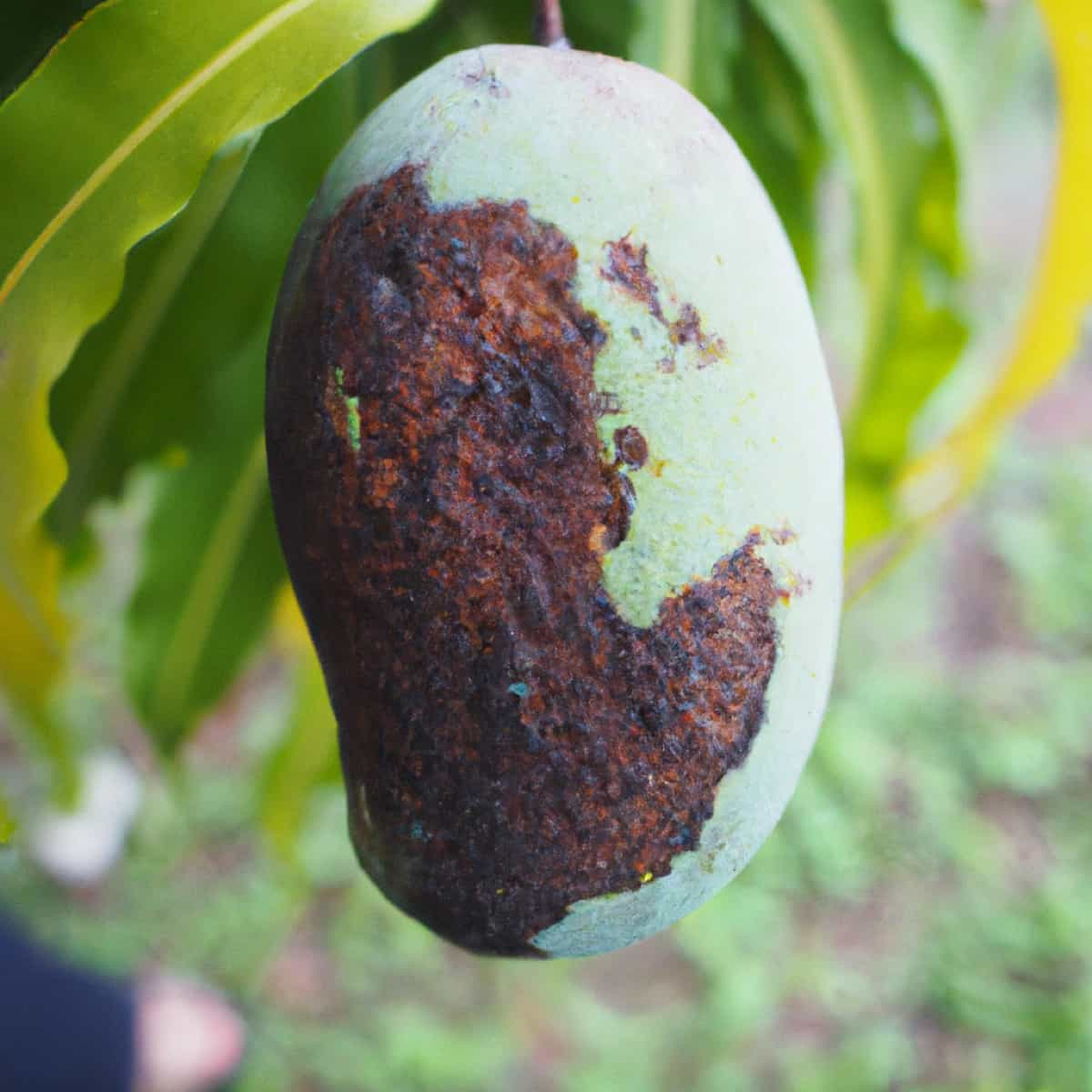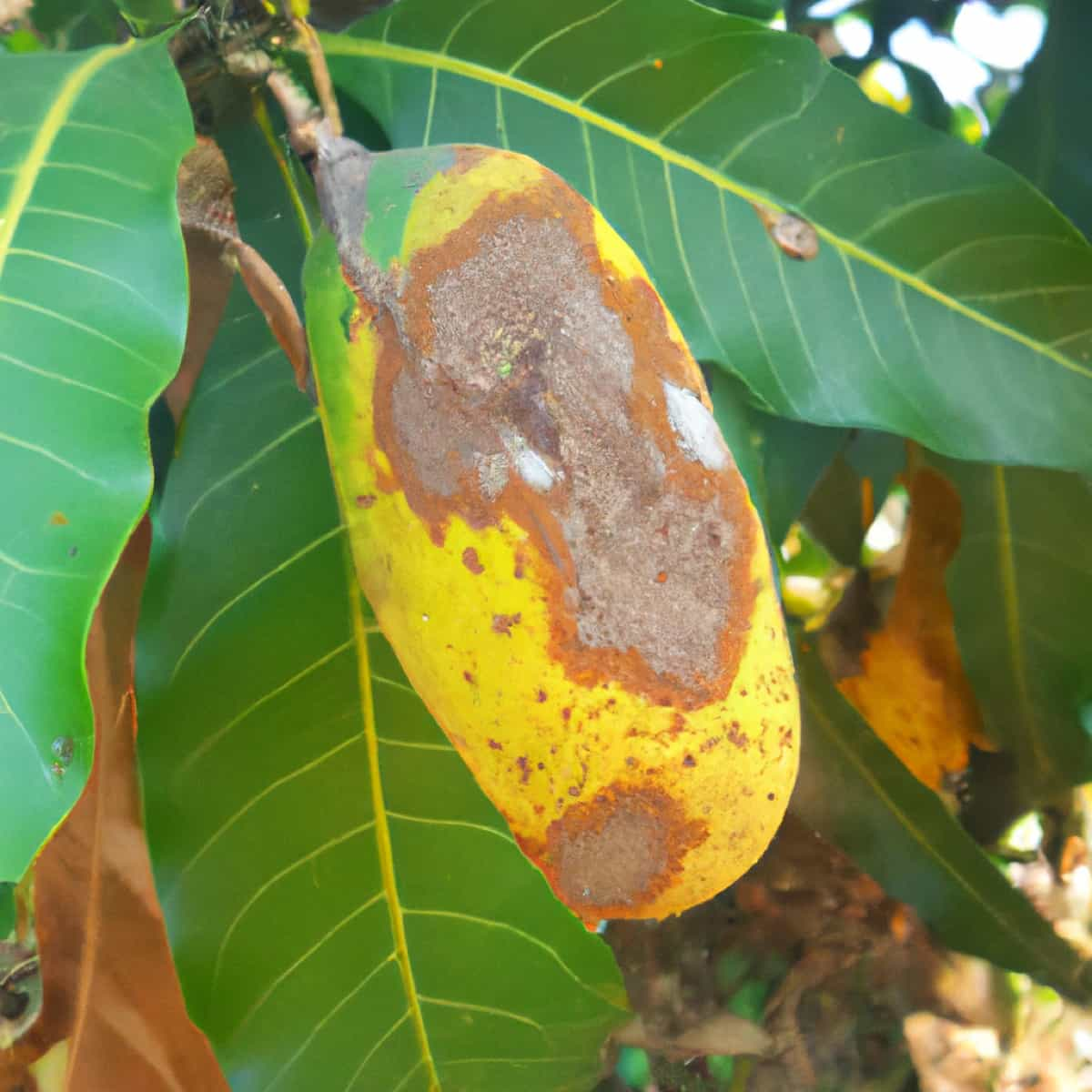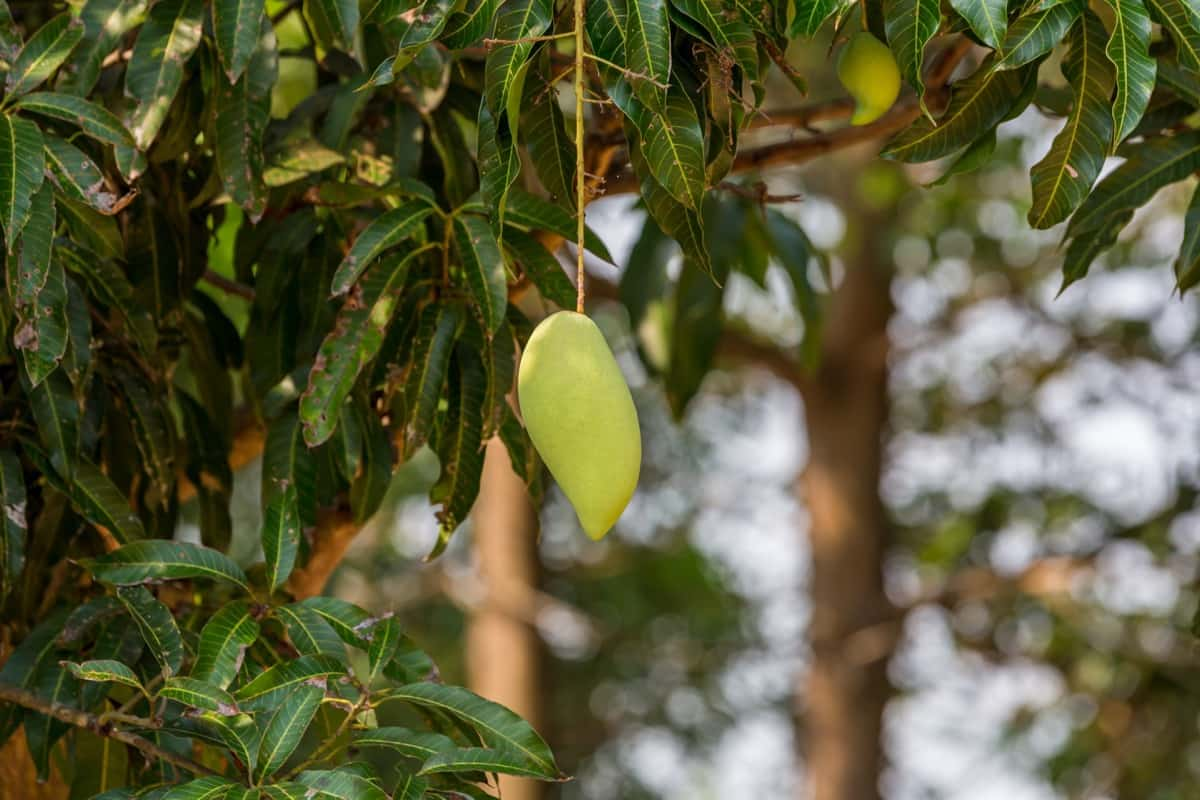The Mango Anthracnose Disease is a fungal disease caused by the pathogen Colletotrichum gloeosporioides. This disease affects mango crops worldwide and is considered one of the most serious diseases of mango. Infected trees can show symptoms on flowers, fruit, leaves, and twigs. Managing mango anthracnose disease involves pruning and removing infected parts, fungicide applications, and cultural practices such as maintaining good soil fertility, resistant varieties, and water management.

To effectively manage this disease, it is important to understand its disease cycle, the mode of disease spread, and the best methods for controlling it. This article will provide an overview and discussion of the Mango Anthracnose Disease in Mango crops, including its symptoms, identification techniques, and control.
Mango Anthracnose Disease Management
The Causal Organism of Mango Anthracnose Disease
- Colletotrichum gloeosporioides is a wind-borne saprophyte that belongs to the Family Glomerellaceae of Order Glomerellales of the Phylum Ascomycota.
- Its mycelium is haploid, septate, and colored.
- Conidia are uni-cellular, heterothallic, transparent, and elongated. The conidial germ tube produces dark appressoria. These spores are spread by wind, water, and insects and can travel large distances.
- C. gloeosporioides is the anamorph stage, whereas the Glomerella cingulata is the teleomorph stage of the disease.
The Disease Cycle of Mango Anthracnose Disease
The disease cycle of Mango Anthracnose Disease, Colletotrichum gloeosporioides, in Mango Crops starts with the fungus present in the environment. The fungus is spread by splashing water or wind-driven rain. Infected seedlings or other infected plants can also spread the fungus.
Once the fungus is present on the mango crop, it will germinate and penetrate through leaf stomata, wounds, and damaged areas. The fungus will then produce spores spread by wind, water, and insects. These spores can then infect other plants, which can then spread the disease further. The spores infect the fruits while they are green through the pores on the fruit, and the latent infection occurs through lenticels. The disease can also be transmitted by contaminated pruning tools and irrigation water.
Once the fungus has infected the mango crop, it will cause leaf lesions. These lesions will produce more spores, which will spread the disease further. The fungus will cause rot on the leaves and fruit, which can lead to the fruit dropping off prematurely. The fungus can also spread to other plant parts, such as the stem and roots. This can cause the plant to become weak and can lead to wilting and death. The fungus in the dead twigs and other crop debris is the primary source of infection. The secondary mode of infection is air-borne conidia.
Occurrence of Mango Anthracnose Disease in Mango Crop
- Location of Mango Anthracnose disease: This disease occurs in mango crops in India, Sri Lanka, France, Brazil, Indonesia, Trinidad, Mexico, the United States of America, Peru, Portugal, Hawaii, and the Philippines.
- Host range: The most common crops affected by Mango Anthracnose Disease are mango, Citrus species, yam, papaya, avocado, coffee, eggplant, sweet pepper, and tomato.
Favorable Conditions for Mango Anthracnose Disease Spread in the Field
- Cloudy and misty weather conditions at the flowering stage favor the spread of the disease in the field.
- The optimum temperature at which the conidia are produced is 27°C, and relative humidity is between 95-98%.
- Pruning, harvesting, and other mechanical damage can also create wounds that allow the pathogen to enter the plant.
Damage Symptoms of Mango Anthracnose Disease
- Dark lesions on mango tree leaves, twigs, and fruits characterize the disease.
- The symptoms on fruits and leaves include sunken, water-soaked lesions with a velvety texture covered with a greyish-brown powdery mass of spores. The disease can cause premature fruit drop and leaf shedding.
- This disease produces twig blight, fruit rot, wither tips, leaf spots, blossom blight, and blister spots on leaves and twigs.
- Young twigs show withering and dieback symptoms.
- Black spots occur on the fruits. The fruit pulp hardens, then cracks and decays at the ripening stage. And the dead tissues drop out, leading to the shot hole symptoms.
In case you missed it: Shoot Gall Psyllid Pest Management in Mango: Symptoms, Treatment, Chemical, Biological, Natural, and Organic Control

Percentage of Yield Loss due to Mango Anthracnose Disease in Mango Crop
- The disease has caused 30% yield losses in the United States. In Mexico, yield losses range from 20-30%. In India, yield loss is between 50-80%. In Bangladesh, it is 60%. In China, a 50% yield loss is seen. In Thailand, it is between 50-70%.
- In Africa, yield losses are between 30-50%. In the Philippines, it is 40%. In Brazil, it was 40-60%. The Economic Threshold Level is generally determined at 10-15% of the infected fruits.
Cultural Control Measures of Mango Anthracnose Disease
- Avoid overcrowding: The plants should be spaced out in the field to ensure adequate airflow between them so that the disease does not infect the healthy plants on contact.
- Crop rotation: Rotating mango with other non-host crops, such as pulses, can help reduce the risk of disease incidence.
- Pruning and thinning: Removing diseased branches and thinning overcrowded canopies can reduce the fungus spread by increasing air circulation and light penetration.
- Roguing out: Removing and burning the infected plants is necessary to prevent the spread of this disease throughout the field by contact with the infected plants.
- Sanitation: Removing debris, such as fallen leaves and fruit, from the orchard can reduce the fungus spread.
Biological Control Measures of Mango Anthracnose Disease
- Apply 6-8 sprays of Pseudomonas fluorescens, Bacillus subtilis, or Bacillus cereus at 3-week intervals starting from October on flowers.
- Trichoderma species produce antibiotics that inhibit the growth of the pathogen and act as a form of natural fungicide.
- Entomopathogenic nematode Steinernema feltiae parasitizes the fungus and reduces the pathogen population. And the yeast Rhodotorula minuta is an effective biocontrol agent.
Chemical Control Measures of Mango Anthracnose Disease
- The common fungicides used to control anthracnose disease in mango are Carbendazim, Copper Oxychloride, Hexaconazole, Bavistin, Zineb, Benomyl, Thiobendazole, and Copper fungicides.
- Fruit Dip Treatment – Dip the fruits before storage in Thiobendazole or Benomyl for 5 minutes.
Organic Control Measures of Mango Anthracnose Disease
- Hot water treatment – Treat the fruits with hot water of 55°C for 20 minutes before storage.
- Vapor heat treatment – Expose the fruits to hot vapors of 50°C for 15-18 minutes before storage.
- Hot water brushing – Practicing hot water spraying and fruit brushing for 20-25 seconds will enhance the shelf life of the mango fruits.
Preventive Measures for Control of Mango Anthracnose Disease
- Planting mango varieties that are resistant to the fungus can reduce the spread and severity of the disease.
- Removing infected plants and reducing crop density can reduce the spread of the disease.
- Regularly monitoring fields for signs of disease will help to catch and manage it early before it spreads.
- Avoiding overhead irrigation and using drip irrigation instead can reduce the spread of the fungus.
In case you missed it: Shoot Borer Pest Management in Mango: Symptoms, Treatment, Chemical, Biological, Natural, and Organic Control

Conclusion
Mango Anthracnose Disease, caused by the fungus Colletotrichum gloeosporioides, is a major threat to mango crops. It can cause significant losses in yield and quality and reduce the marketability of mangoes. Integrated management strategies, including cultural practices, chemical treatments, and resistant varieties, are essential to reduce this devastating disease’s impact.
- Beneficial Insects in Pest Management
- Natural Solutions for Pest Control in Flower Gardens
- Types of Fungicides Used in Agriculture
- Common Issues in the Fruit Development Stage of Pomegranate Farming
- Fruit Development Issues in Papaya: Easy Solutions and Treatment
- Soil-Borne Diseases and How to Protect Your Plants
- Practices to Prevent Disease Spread in the Garden
- From Wilted to Thriving: How to Treat Root Rot Naturally in Houseplants
- Natural Remedies to Cure Brown Spots on Fig Tree Leaves